The Ultimate Insider’s Travel Guide
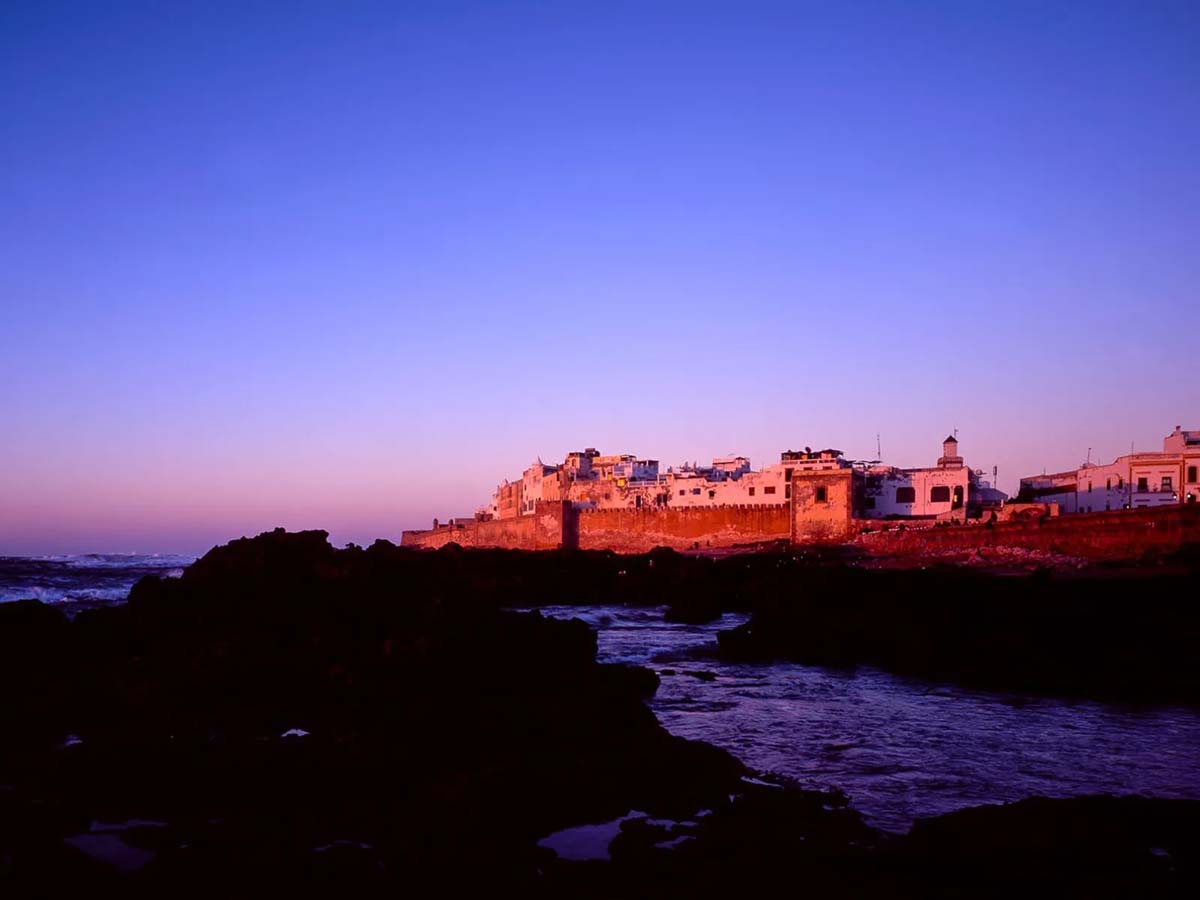
Essaouira (spelled Essaouira in Latin script, and الصويرة in Arabic script)
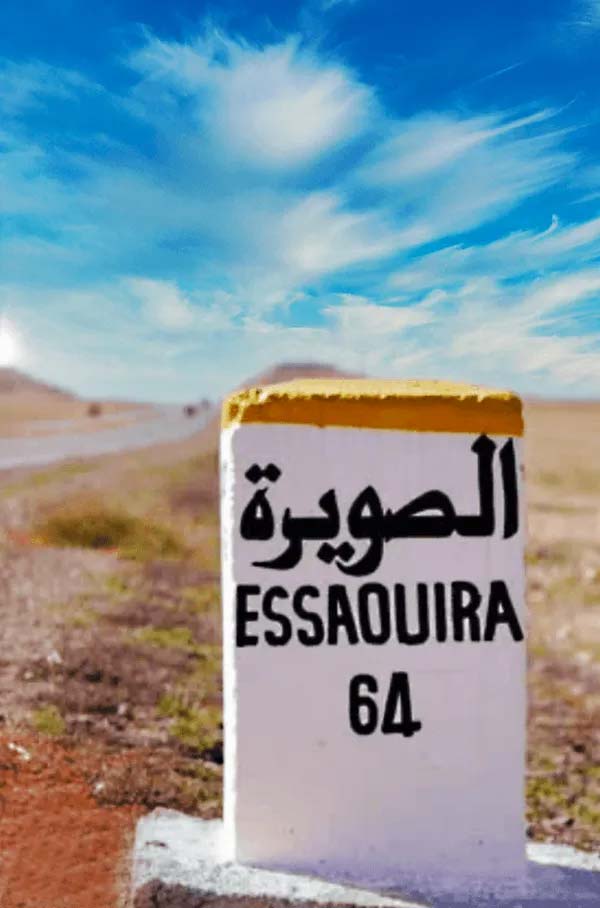
Situated at the Atlantic ocean, Essaouira is a pristine treasure of an ancient coastal town, known for its natural beauty, seaside views, scenic beaches and relaxed atmosphere.
With around 320 days of sunshine per year and a population of slightly under 80,000 people, this small city offers a tranquil getaway from the hustle and bustle of other tourist destinations in Morocco.
Essaouira has grown to be a key destination for those who want a fairly unspoiled seaside escape, as well as historic sceneries.
The city has a deep history spanning back for centuries, lasting through numerous eras which have produced lasting prints on its culture and people.
These days, this history and a great appreciation for its heritage brings visitors year-round to Essaouira.
Locals take pride in their artisanal work; the typical Thuya wood goods, the traditional Moroccan lamps as well as the pottery popular throughout the country are for sale at nearly every street corner here.
And apart from a number of small museums, the city also offers quiet, peaceful surroundings and a wonderful selection of small beachside restaurants, bars and shops as well as cafes popular with locals and tourists alike.

To know what to do in Essaouira, our ultimate guide is intended to help you plan your stay in hustle-free and efficient manner.
Let’s start with a few points that you may want to consider before embarking on your journey to Essaouira.
Also called: The wind city, Essaouira has an ideal (mild) climate for travel year-round, with average temperatures ranging from around 16 degrees Celsius (≈ 60 degrees Fahrenheit) during winter to the low 30 degrees Celsius (≈ 86 degrees Fahrenheit) during summer. That’s why, in winter, it’s best to be prepared with warm clothes, blankets etc. as the temperature usually drops below 20 degrees at night. Despite the wind however, Essaouira gets an average of 320 days of sunshine every year.
Typically speaking, the best time to visit Essaouira is either around spring or early autumn (September to November), as those months offer the best combination of mild weather and light crowds around touristic and cultural activities. However, thanks to the city’s diverse offerings, you’ll find something to enjoy all year long, and hence the best time for you to visit will depend on what you’re planning to do in Essaouira, as well as your budget.
While you can visit most of the relevant places in just one day depending on your travel rhythm and how much time you have available, to soak in the spirit and vibes of the city however, one would need at least a 1 week stay.
Despite some misconceptions roaming around the internet, Morocco (including Essaouira) is considered one of the safest countries one can visit, with very low crime rates compared to other countries, thanks to the continuous efforts of the authorities as well as the vigilance of the locals. Please note however that a reasonable sense of caution (like anywhere else around the globe) is warranted and is always a good practice.
Apart from the abundant car rental options available in both: airports and in the cities, Morocco has an efficient transport network making travel around Morocco relatively easy for everyone. For Essaouira, the city has a central bus station, an airport as well as a grand-taxi terminal. Additionally, small inner-city taxis, city busses as well as traditional carriages make it very affordable and easy to move within Essaouira. For areas outside the city, big taxis and busses are your best option.
While photographing and videotaping your journey is generally allowed in Morocco, there are certain points you need to take into consideration before taking pictures / filming in Morocco:
Did we miss anything in this list? Feel free to let us know in the comments below
Please note that as the tourism scene is constantly changing, we’ll be updating the following guide accordingly as those changes occur. Furthermore, as it’s a long comprehensive read, you may want to bookmark this page for future reference.
Essaouira is an ideal place for a warm, sunny vacation and its accommodation options are abundant. Regardless of whether you’re aiming for a quick one day visit, or planning a long stay, it’s very easy to find an option that fits your needs and budget. Most rentals and hotels are beautifully constructed and the majority is in close proximity to anywhere you may wish to go, and to anything you may need. While there’s a small town center in Essaouira, most of the life in this city is within the old town (Medina) as well as around the beach areas. However, because Essaouira is a very small city, regardless whether you’re staying within the Medina or outside of it, everything is still quickly accessible compared to other larger cities.
Make sure you check the guest reviews of the accommodation on Trip Advisor or Booking.com before booking.
The word Medina (or Madina in the standard Arabic language) means City.
However the term Medina is mainly used in numerous North-African countries (including Morocco) to name the old historic and non-European part of a town or city, which is typically surrounded by high stone walls (like in Essaouira, Marrakesh and Fes to name a few).
Those Medinas are usually divided into small ancient neighborhoods (aka. Quartiers and Derb in Moroccan Arabic) that are famous for their narrow alley ways.
Each ancient “quartier” often has a mosque, a hammam (traditional bathhouse), a collective bread and baking oven, a madrasa (traditional school) and a communal water tap, at the service of the local community within that area.
The following are a few examples of the accommodation options in and around Essaouira’s Medina.
For an authentic Moroccan experience, there’s nothing like a stay in a Riad.
Synonymous with luxury, these private old medina homes have been carefully restored into comfortable and charming houses in the heart of the old town of Essaouira.
The Riads’ decoration is often a harmonious blend of tradition and modernity. However numerous ones remained radically contemporary.
In any case, you will be immersed in an authentic oriental atmosphere.
And even though some have a swimming pool and wellness facilities, such as a traditional hammam or even a courtyard trickling fountain, the general structure of these houses is always similar: traditionally based around a central open-air garden or a patio with a terrace overlooking the heights of Essaouira.
Haven of peace very close to the fervor of the souks, La Place square and traditional life in the alley ways.
Staying in a Riad represents the opportunity to appreciate traditional Moroccan architecture up close.
It is not uncommon to find Riads that have been established for centuries.
These often have traditional style furniture and crockery.
The list of our recommended Riad rentals in Essaouira have been picked with great care and is intended to help you organize your stay in the best possible conditions, as they all are well placed within the traditional medina of Essaouira.
To select the most beautiful and charming (traditional or contemporary) luxury Riad guest houses in Essaouira for you, we have visited each Riad that we recommend, assessed their comfort as well as their equipment and we know their owners / care-takers well.
It is better to book in advance via Internet or via phone as the prices tend to be lower rather than arriving unannounced and paying higher prices and / or having limited room choice options.
A shared home is a ‘home away from home’.
While similar to a hostel in many features, a shared home offers a homely atmosphere.
If you’re looking for a unique way to experience Morocco with a more affordable option than staying at a hotel or an inn, consider renting a room in a shared home.
A shared home accommodation with a local family offers the chance to experience traditional Moroccan hospitality firsthand, and you’ll be able to immerse yourself in Moroccan culture.
Food-wise you can either opt to share the same meals the family prepares, eat outside (restaurants etc.), or you can bring your own desired food and beverages.
If you wish to bring your pet with you on your journey, make sure you clear it with the host before booking. Similarly, if you have any pet allergies, make sure you inquire whether or not your host has any pets beforehand.
If you’re into “all-in-one” vacation packages, you are likely to get better value for money when choosing a luxury hotel because they provide exceptional services from the start and throughout your stay.
You are also entitled to other additional features such as guaranteed WiFi access, drinks, breakfast, TV, etc.
Most high-end hotels will undoubtedly offer better scenery and surroundings, as they are usually located in the best part of town.
You will often find that they are located near an open area, gardens or attractions.
This way you won’t have to travel very far from your accommodation as there are plenty of things to discover in the immediate vicinity of the hotel.
Many luxury hotels offer more than just a room and a bed. They offer a wide range of activities and events for guests who want to stay active while on vacation.
But if you don’t feel like exercising, there are other activities that are more conducive to relaxation.
Luxurious spa treatments and massage sessions are only a few examples for a relaxing and a worry-free stay.
Even though many other accommodation types offer unforgettable traditional culinary experiences, you can expect the best cuisines and plenty of food choices when staying at a luxury hotel.
The hotels usually employ top chefs to ensure you get the best taste, quality in food, and fresh local ingredients.
To avoid paying commissions to platforms like Expedia or Booking.com or those of a hotel comparator like Trivago or Kayak, many establishments offer the lowest rate, directly on their website. So your best bet is to book directly with the hotel.
A beachfront apartment offers that extra bonus that has a positive effect on your physical, emotional and psychological health: The cool ocean breeze, the roaring of the sea, the feeling of the sun on your skin.
Additionally, the optimal setting offers plenty of options for exercising: be it swimming, volleyball, Yoga or taking a walk or a run along the stretch of Essaouira beach.
With the view of the beach and the beautiful surrounding, in addition to comfortable living spaces and many Essaouira apartments’ holiday amenities, you’re guaranteed a memorable sunshine and coast holiday.
Relax and enjoy the view, the apartments are functional and all equipped for a stay with family or friends, and the exceptional air quality of the Atlantic ocean will leave you feeling refreshed, and will help with a good night’s sleep.
Make sure the apartment you book has a terrace or a balcony, as those usually offer spectacular views and enough space to sunbath for folks who prefer to do so in privacy.
Beach sun right on your balcony…
Do you dream of long fine sandy beaches and stunning sand dunes overlooking the Atlantic ocean?
Essaouira Apartments is exactly that, as it has one of the best beachfront spots with multiple properties in the entire city.
Book your beachfront apartment in Essaouira and get that calm and carefree feeling every day!
Experience the timeless and traditional Moroccan village architectural style while being able to enjoy all modern comforts.
This is the ideal option for those who seek a truly peaceful and wholesome retreat in an environment of natural beauty.
The Moroccan traditional village villas are designed with love and with local traditions in mind. The buildings are constructed with contemporary (and mostly local) materials.
The traditional villas around Essaouira usually have both spacious and cozy settings with colorful touches and fully equipped kitchens with beautiful handmade materials (i.e. traditional ceramic tiles etc.).
And though easily accessible from the main roads, most of the villas in the villages around Essaouira enjoy a secluded peaceful atmosphere.
Prices are generally more flexible and more negotiable than other accommodation types.
Whether in an RV, a tent or a shack, and whether you camp inland or near the beach (both wild-camping or within a secured and designated camping place), camping can be a lot of fun.
The environment offers a plethora of physical activities outdoors with various levels that improve not only the physical, but also the mental well-being.
And even though there are only a few camping spots around Essaouira, those offer plenty of options.
When camping, one automatically gets in touch with nature, wildlife etc. Enjoy the camp fires and the beautiful starry sky away from the lights of the city.
When wild-camping, make sure you do so in a designated area to avoid issues with the local authorities.
Alleys with soul & a special touch
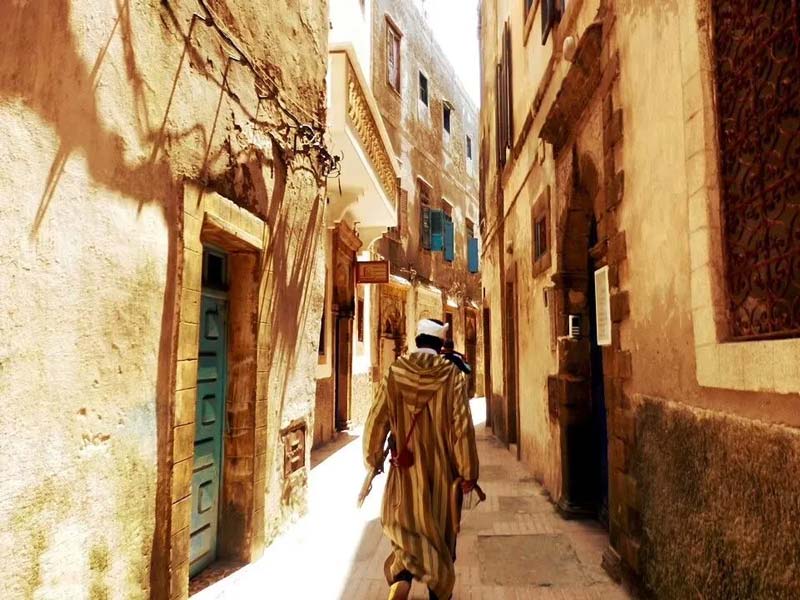
Like many other old cities in Morocco, Essaouira features a variety of narrow alleys.
A tour along the small streets will allow you to witness the local life of the Swiris and their activities, as well as get the feel for the city’s history and culture.
Discover some of its more than 100 alleys, many of which have no exits, and uncover what is hidden in its maze which is full of surprises.
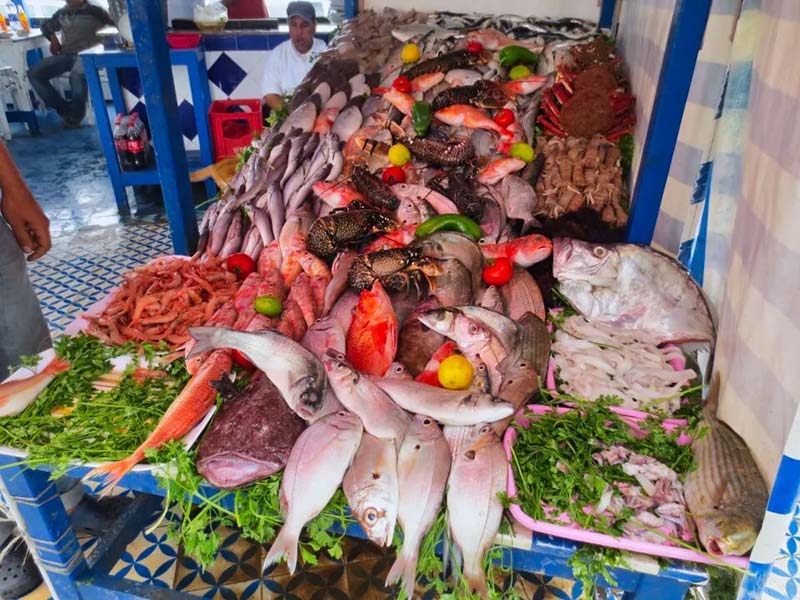
Essaouira’s fish market is located within the old Medina.
Every day, a dozen of sellers and hundreds of buyers come to try to do business in this small fish market.
Seeing all these people bustling about and screaming to buy and sell fish and admiring the numerous stalls covered with many species… It’s one of the most authentic and typical experiences live in Essaouira.
If you’re looking for a culinary fish tour however, the small shacks located at the Place Moulay Hassan near the fishing port are your best bet.
Enjoy the displays of the wide varieties of fish and seafood caught in the vicinity of the city, and savor delicious fresh fish prepared before your eyes by one of the chefs. Eating takes place both outside and within the fishing port.
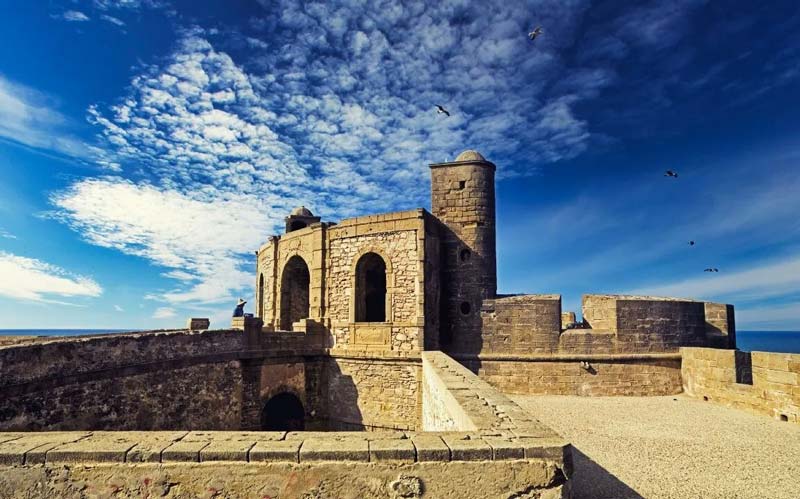
The first ramparts (as well as the Castelo Real fortress) of Essaouira were first built by the Portuguese at the time the city was still named Mogador, and are hence an important element of the city’s history.
The buildings were a protection against foreign invasions and intruders.
After being destroyed in the 18th century, in place of the initial ramparts, others (named Scala del Mar – “the stairs of the sea;”) were built, and are today still defying the ravages of time and the elements’ erosion.
It features oversized walls and an impressive defense system designed to withstand heavy attacks. It is still possible to observe there today the arms rooms, the dungeons, the cannons, which are significant witnesses of this rich past.
This part of Essaouira will not fail to delight visitors looking for a real immersion in history.
And for fans of the Game of Thrones series, know that the Skala served as a filming location for season 3. In the episode where Daenerys seizes the army of the Unsullied in Astapor.
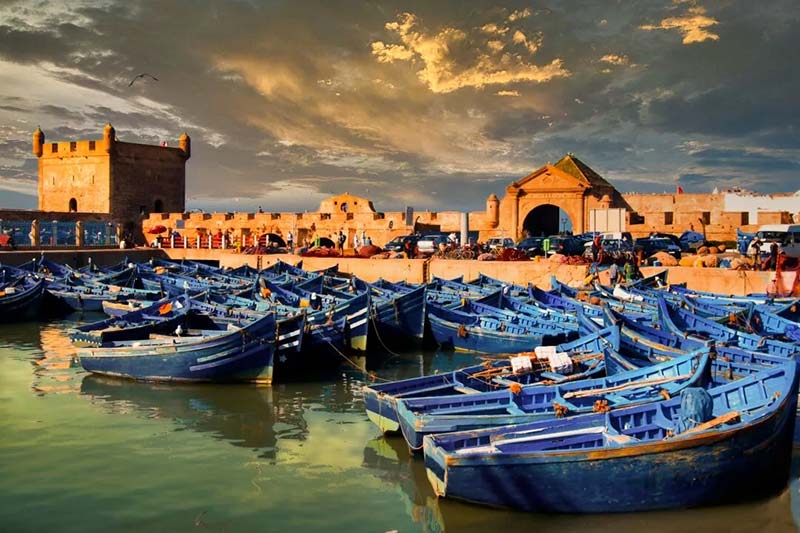
With its busy atmosphere, it is indeed the most spectacular and liveliest place in the city. The port is besieged by dozens of trawlers and many blue wooden boats, moored and serried in rows.
The hundreds of fishermen unload, deliver and negotiate their fish, rays, molluscs and other seafood, all in an infinitely active atmosphere, and friendly, authentic hubbub!
And apart from the smells and the sounds, mind the hundreds of seagulls and gulls, that circle around this spectacle, in the hope of catching a leftover fish to “feast”.
The port of Essaouira offers a fascinating picture for each visitor who strolls in the middle of this very particular effervescence…
The hammam has its origins in Roman baths, but takes its current form from the Ottoman Empire.
The Moroccan hammam is a real place of purification of the body and the soul, as well as a beauty ritual with multiple benefits.
It’s usually divided into 3 rooms:
The apodyterium, at room temperature, which is a relaxation room.
The tepidarium, which acts as a transition room, where the heat is a little more intense.
Finally, the caldarium, the hottest room, where the air humidity can reach 100%.
During a hammam session, one is supposed to move from room to room gradually and stay between 15 and 20 minutes in the caldarium to dilate all the pores of the skin. In addition, scrubs with Black Soap (with many emollient and softening properties) and Kessa Glove, end up cleaning the skin in depth.
It is also customary to receive a full body exfoliation, accompanied by a massage, to enjoy this even more.
But that’s not all: The hammam has further benefits: the heat activates perspiration and thus, the body evacuates water, bad fats and all the toxins concentrated in the dermis / the skin.
Result: you come out with perfectly soft skin, purified of its imperfections.
For Everyone’s Culinary Taste And Preference
Moroccan cuisine offers a panoply of succulent recipes encompassing different culinary categories, and is reputed to be one of the best in the world.
In addition, Moroccan cuisine, like that of the Mediterranean, is rich in flavor, low in fat and uses mostly olive oil for cooking, making it very healthy.
Here are a few of the world famous Moroccan delicacies you may want to include it in your vacation menu!
“Seksu” in Arabic and “k’seksu” in Berber, the couscous is a traditional dish emblematic of Morocco.
The word Couscous designates both semolina (once steamed in a couscoussier) as well as the whole dish which is prepared traditionally every Friday, as well as also eaten on special occasions (weddings, religious ceremonies, births etc.).
The origin of couscous is often attributed by historians to the Berber people (indigenous ethnic group of North Africa).
Subsequently, this dish spread throughout the world, including many European countries.
But even though Couscous is an essential element of Moroccan cultural identity, it has also been officially declared “Common Maghreb Heritage” and more recently, a project aims to classify it as a common heritage of humanity by the United Nations.
Moroccans usually gather around a good couscous to strengthen friendships, alliances or to show hospitality and generosity.
The preparation, as well as the choice of ingredients, depends on regions, but also on the purchasing power of each family.
This dish can be enjoyed cold or hot, sweet or savory.
There are several kinds of couscous, but here are some of the most famous ones:
– The t’faya which is sweet and salty eaten with chicken, raisins and caramelized onions, and flavored with cinnamon.
– The bidaoui with 7 vegetables and meat.
– Belboula couscous made with barley semolina.
– etc.
Tajine, this magic word is an evacuator of the flavors of the Maghreb, and like the Couscous, is one of the traditional Moroccan dishes par excellence.
It takes its name from the typical earthenware utensil in which it is slowly cooked (usually) over charcoal.
It is originally a Berber dish: a kind of stew, in which vegetables and either meat, chicken or fish are stewed.
Cooking a Tagine is an art of and in itself and it can be prepared with all kinds of ingredients.
Each Moroccan cook has her / his own recipe, variations around a stew of meat or fish accompanied by vegetables or even dried fruits.
Spices and aromatics remain the elements that give the Tajine its captivating and exotic taste.
There is the everyday Tagine, economical and modest, but always tasty, and the festive Tagine, sophisticated and dazzling.
The Tajine is a mysterious dish whose success depends essentially on the method of cooking: it must be slow so that meat or fish, vegetables and spices intertwine their flavors.
It is important that the sauce becomes as condensed as possible to enhance the flavors.
The pointed shape of the lid has been designed to allow cooking without water, thus preserving all the flavors of the food. The steam coming from the food condenses underneath the lid of the Tajine, then falls back on the food to keep it moistened.
The result is incredible: the food cooked in this Tajine dish is particularly tender and tasty, to the delight of gourmets.
There’s a very large variety of different Tajines, with meat (usually beef or lamb), chicken, fish and even vegetarian. … sweet and savory: there really is something for everyone! Here are the most common Tajine options:
– Tagine of chicken with preserved lemons
– Tagine of meat with prunes
– Tagine of Kefta (ground meat) or meatballs
– Berber Tagine
The Pastilla itself, one of the jewels of pastry, comes in the form of very thin sheets golden in butter and garnished with a stuffing of grilled and crushed almonds, milk, eggs, butter, sugar and cinnamon.
B’stilla on the other hand is a classic Moroccan dish, traditionally made with pigeon, squab or chicken instead. Poultry is seasoned with sweet and savory spices and coated in layers of puff pastry before baking. The result is a savory pie with a hint of complex sweetness, traditionally served as part of a main meal.
However, it can also be made with lamb or rabbit, or with vegetarian ingredients to accommodate dietary concerns.
Each cook also has a slightly different recipe for B’stilla, but it takes experience to achieve the recipe’s perfection.
Moroccan Harira is a very rich and nutritious soup made from pulses and meat.
Although it can be eaten all year round, it’s often prepared during the month of Ramadan and is usually the dish with which the fast is traditionally broken during this holy period.
This is one of those dishes whose recipe can vary from family to family as well as from region to another. Among the ingredients that are seldom lacking are diced meat, usually beef or mutton, but especially lentils and chickpeas, tomato and lemon juice, all seasoned with spices and a variety of herbs.
Harira is usually served with dates, dried figs and boiled eggs.
The root of the word harira, in Arabic حريرة, means “heat”, “to heat” but can also be called bufertuna (“good luck”).
Later exported to the rest of the world by Moroccan Jews, harira is also often featured on the Shabbat table. It is also usually served at the end of the Jewish fast of Tisha B’Av, a day of mourning and fasting in the lunisolar religious calendar of Judaism.
Bissara, also known as Bessara, Besarah and Tamarakt (Arabic: “بصارة”, Berber: “Tabissart” or “talkhcha”) is a bean soup / dip in Moroccan cuisine, prepared with dried broad beans and mashed as the main ingredient.
Additional ingredients include garlic, olive oil, lemon juice, chili pepper, cumin, and salt. It is served in shallow bowls alongside a generous drizzle of olive oil, cumin and hot paprika.
Often eaten by workers for a filling breakfast and popular during the colder months of the year, and is generally inexpensive and has been described as a poor man’s dish.
Bissara is eaten mostly as a dip for bread, and is served for breakfast, or more rarely, for lunch or dinner.
Since Essaouira is a port city, one can find fish almost everywhere: In hotels, restaurants and small grillades scattered throughout the place.
And as mentioned earlier, you will find local fresh seasonal fish, and seafood in both the Medina fish market as well as at the shacks near the port at very affordable prices.
It is especially recommended to bet on grilled marinated fish, as it is flavored, tasty, healthy and high in nutritional value.
Nothing beats a good fresh fish over wood fire and in an a lively environment, where you can see local fishermen at work and get a cultural insight that many tourists miss.
Very ideal for families and seafood lovers.
Moroccan pastry is like clay that preserves the footprints of our distant ancestors.
Its flavors, its ingredients as well as its manufacturing secrets, represent all the roots that have nourished Morocco since the dawn of time, and the influences aggregated over centuries that have come to color its culture.
Steeped in Mediterranean, Oriental, Turkish, Andalusian and Jewish inspirations, the sweet delicacies that punctuate Moroccan tables form an extraordinary mosaic for the senses.
With the decline of the Arab presence in Andalusia, many Andalusians, of Muslim or Jewish faith, crossed the Strait of Gibraltar and settled, particularly in the city of Fez, bringing with them their culinary traditions. This is how, over time, the number of specialties has increased significantly.
If you haven’t tasted the Chebakias (very popular during Ramadan for breaking the fast, as an accompaniment to soup), or haven’t enjoyed the ardor of the taste of Briouates, or a milk pastilla, or even just a warm crepe spread with Sellou, you haven’t yet discovered all the marvels that Morocco has in store for you culinarily.
All pastries are kneaded and formed by hand. Be it the gazelle horns, made from marzipan, and baked in the oven, or the chebbakiya, fried in oil, then dipped in honey. Sellou or seffouf, the powder made from flour, almonds, sesame, sugar, mastic gum or cinnamon, all toasted and drizzled with melted butter. The serpentine rolled up M’hanncha, made up of almonds, sugar, cinnamon and orange blossom water, in a puff pastry of B’stilla dough.
As for the famous Briouat (with honey and almonds), nicknamed the queen of Moroccan pastry, its name comes from the word “bra” which in Arabic means “letter”. “Bria” is the trivialization, a very small letter therefore, because its shape resembles the secret envelope in which Andalusian lovers slip sweet messages…
Faithful to our tradition of hospitality, we Moroccans like to welcome our guests generously. Mint tea accompanies the traditional pastry as a sign of welcome. They are served at different celebrations.
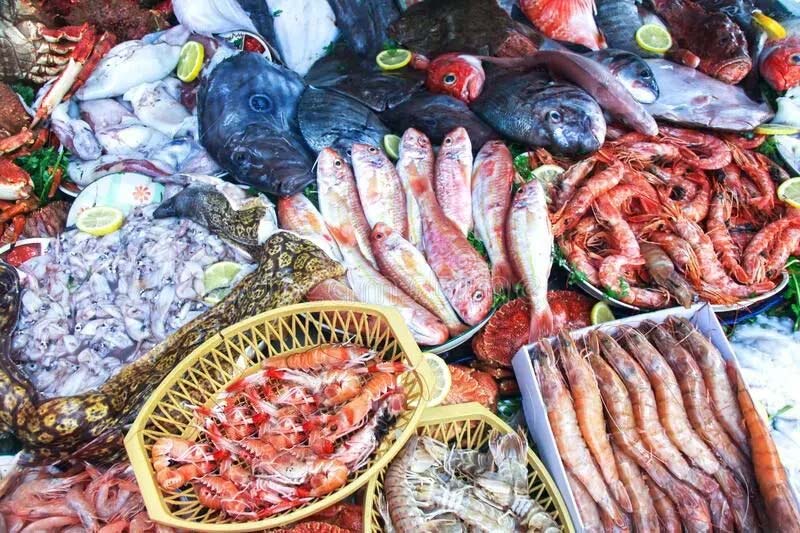
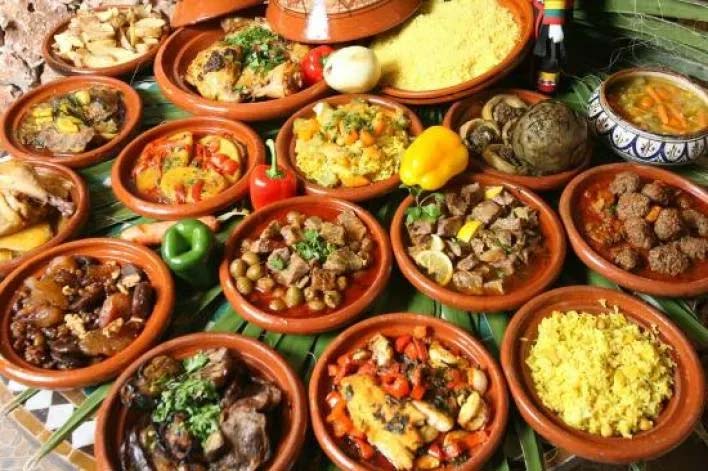
You can choose to include food selections from the wide variety of traditional Moroccan Berber dishes of the local specialties we offer during our picnics.
FOR INQUIRIES, PLEASE CONTACT US AT: INFO@PALMAQUAD.COM


We believe in functioning in harmony with nature. When that’s achieved, everything comes to its place.
We provide everything needed for creating special and unique experience for our guests available here.
One of the basic philosophies for any kind of holiday and pleasure is quality. We set everything for your comfort and satisfaction.
For Everyone’s Culinary Taste Or Preference
Though there are plenty of restaurants etc. in and around Essaouira, the following mentions are our favorites as locals.
Umia is one of our favorite restaurants. Apart from the warm welcome and the personalized service, it offers not only a refined cuisine, delicious dishes and a very pleasant setting, but it’s also an ideal spot to discover very good Moroccan wines in a relaxed atmosphere.
Additionally, Umia offers a wide variety of vegan, vegetarian, and gluten-free options, and is wheelchair accessible.
On the waterfront with a magnificent view of the island, Terrasse des Saveurs is also one of our favorites not only because of the fresh products, hearty plates that delight the taste buds and the perfect value for money, but also because it’s one of the best fish and seafood cuisine restaurants in the city.
The flawless (family-style) personalized service makes you feel like at home and even dogs are welcome.
Created in 1928 by Maâlem Driss, Chez Driss is one of the oldest pastry shops in the city.
This cozy little pastry shop offers its visitors a wide variety of pastries and sweets of all kinds, as well as delicious drinks to accompany them.
The modest tables at the shaded patio have welcomed literally hundreds of thousands of travelers with gustatory pleasures throughout the years.
Take a break for a moment of relaxation in a space decorated with hundreds of period photographs, telling the story of this small shop.
A place imbued with the culture and history of Essaouira.
For a unique food and wine experience that will connect you to the region’s most coveted wines, and for a truly behind-the-scenes experience, we recommend visiting Val D’Argan.
Only around a 30 minutes drive, the Domaine du Val d’Argan winery was created by Charles Mélia around 20 years ago and is responsible for producing a very respectable range of wines.
The domaine includes not only a winery, but also a restaurant as well as numerous guest rooms, elegantly designed around a pool, with views stretching across the vineyards and the surrounding lush countryside, full of olive and argan trees.
In addition to the wine, the restaurant offers a wide variety of delicious and rich traditional meals.
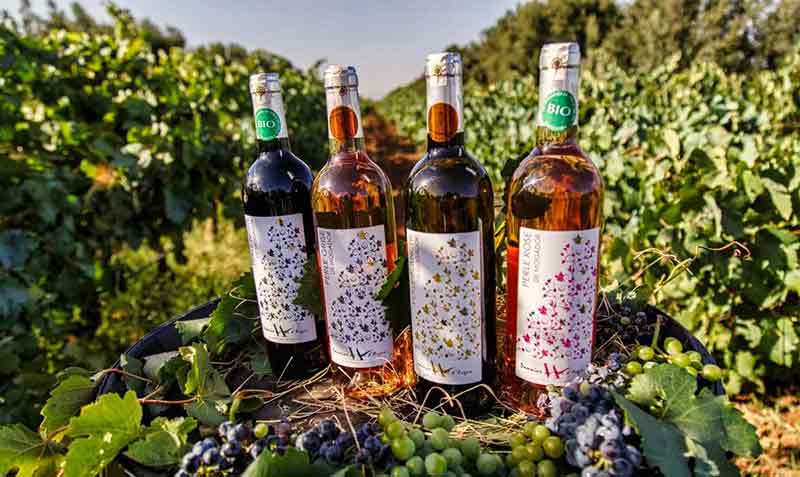
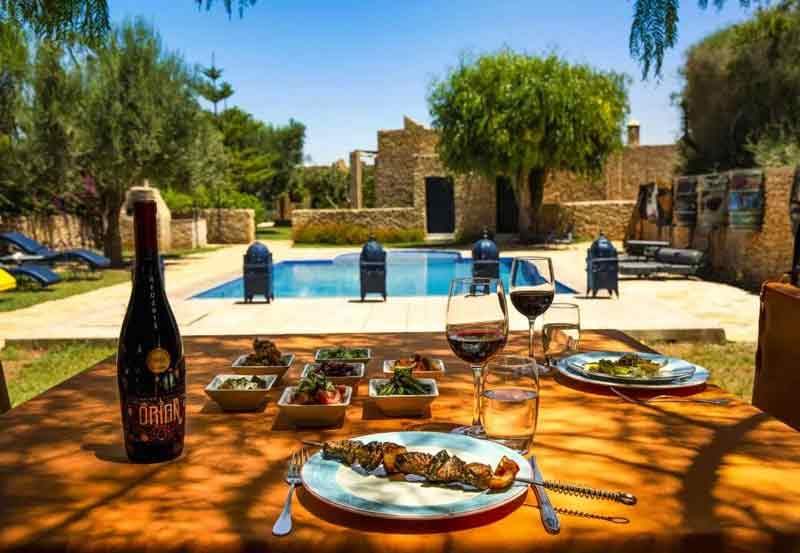
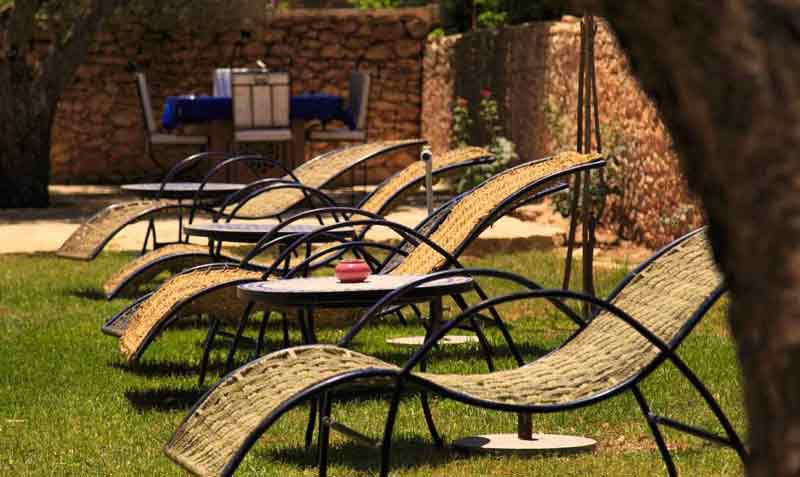
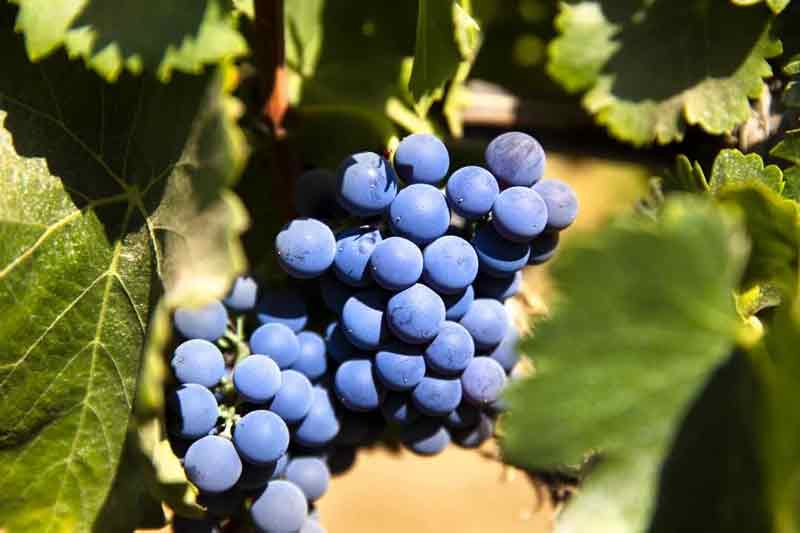
THE MOST FAMOUS PLACE WITH CAFÉS IN ESSAOUIRA IS THE PLACE MOULAY HASSAN.
HOWEVER YOU’LL FIND PLENTY OF QUIRKY CAFÉS, BOTH MODERN AS WELL AS TRADITIONAL, ALONG THE ALLEYWAYS AND THROUGHOUT THE CITY.
Let us know about your favorite café and / or restaurant in the comment section below.
Try Something New & Exciting
Here in Essaouira, the wind blows the majority of the year and attracts wind lovers from all over the world. Surfers, kite-surfers and windsurfers, all are here and enjoy the perfect conditions that Essaouira offers!
Get your adrenaline pumping with water sports and have fun competing with your family and friends under the sun!
But when Mother Nature surprises and cancels the wind, there’s a list of other activities to do in Essaouira when there is no wind!
Experience the stunning sunsets as you ride on the pristine golden sand beach, taking in the beauty of the scenery, or go kayaking.
The beach is perfect for all kinds of recreational activity.
… Over The Atlantic Ocean
The choices of activities are numerous in our beautiful city. Essaouira is for all audiences. If you’re looking to unwind, or get your fill of thrills, you have many options.
Embark on a tour in and around Essaouira and take part in thrilling activities to fill up on memories while enjoying a fantastic journey.
Whatever you do, don’t miss quad biking at the beach with Palma Quad!
If you choose to go quad biking with Palma Quad in Essaouira as part of your journey, you are in for a treat.
A typical tour will start at Palma Quad beach-front office, where you will begin all the activities included in your tour package.
Before the ride starts, you will be briefed on how to control the vehicle and given other general guidelines that will help you get the most out of your activity. Then you’ll hop on a quad for a test drive, before roaming the sand dunes.
Be ready for a thrilling adventure.
Palma Quad offers quad sessions that range from 1 hour up to 6 hours, depending on the type of tickets you have purchased.
During the quad ride, you can take pictures and videos if you wish, and you can even enjoy a delicious meal, depending on the package you chose.
At the end of your tour, you will drive back to the office, where you can group-watch the photos your assigned Palma Quad’s guide has taken during the tour.
Going on vacation to Essaouira promises to be a perfect blend of tradition and luxury. It is therefore a real adventure in which you embark upon arriving in the city of Mogador.
Throughout ancient Arabian history, the camel was the primary way of transportation between towns and cities. Camels are known as the “vessel of the desert” because of their ability to store large amounts of food and water in their bodies, allowing them to travel long distances without suffering from exhaustion or fatigue and dehydration.
So if you are looking for original and unforgettable experiences, camel riding is at the top of the 10 best excursions’ selection list.
It will leave you with wonderful memories, both for the organized activities and for the landscapes you’ll witness. Make sure you take pictures of the golden sand dunes or the sunset that you’ll will be experiencing.
Both adults and children can try camel riding. Taking a camel ride is a great way to partake in traditional Arab culture and learn about its historical significance.
Discover the Essaouira beach and surroundings on horseback!
Whether you’re an experienced rider or a beginner, a trained team of professionals will help you choose a mount adapted to your level, to ensure your ride is fantastic
If you are a beginner, everything will be explained to you on how to lead your horse, before you venture into the beach!
You will discover a diversified fauna and flora and if you are comfortable enough, start galloping and experience a feeling of total freedom!
You are able to make a few stops to enjoy a unique panorama where the dunes follow one another as far as the eye can see!
Be it with family or friends, this tour, accessible to all ages, will allow you to enjoy the Essaouira beach and surroundings. Discover Essaouira in a different way from the top of your horse!
Enjoy the sound of the rolling waves, trot along the dune cords and gallop on the beach with your hair in the wind.
Admire an old watchtower and get impressive panoramic views of Essaouira. Stop in the main square to taste a real Moroccan tea before continuing to visit the most important monument of the city, the scala of the medina.
The Sqala or Skala (term designating ramparts in Morocco) of the city means the sqala of the Kasbah.
The Sqala of the city offers a beautiful pedestrian esplanade 200 meters long; it is reached by the ramp that leads to the northern bastion.
The ramparts contribute to the charms of Essaouira as they place the city in a fascinating historic context; they surround it with their stones which take on ocher tones with the most beautiful effect at sunset.
Ancient cannons dispute the battlements with the seagulls and the ocean comes, tirelessly, to beat the foot of the walls since hundreds of years.
If you’re looking for a complete & tailored package with multiple activities, feel free to contact us!
The City Of Art & Music
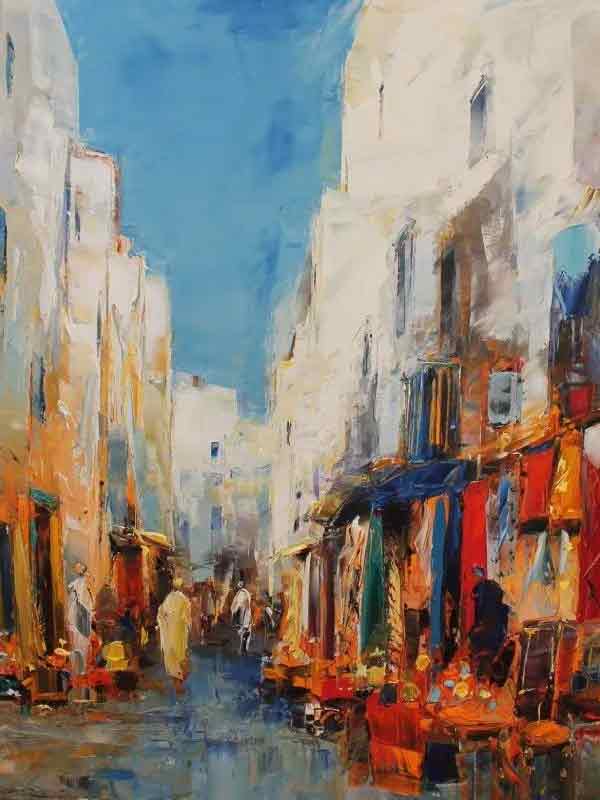
Essaouira has always been a city of Art and Culture, gateway to the African continent and trading post for centuries, and above all, freedom as it definitely stayed away from conformism.
The city still shines today with its syncretism, nourished by influences as diverse as the Gnaoua culture (named after the former black slaves of West Africa), Jewish, Berber and Arab-Islamic traditions.
The population here has naturally become imbued with all these influences to develop a particular sensitivity to art and culture: music, paintings, Thuya sculptures but also craftsmanship, so rich that it is elevated to the status of art.
That’s why it has attracted many artists and intellectuals from diverse backgrounds, coming from afar to meet there or simply find inspiration from the mix of cultures present in the city and its region, in a relaxed atmosphere.
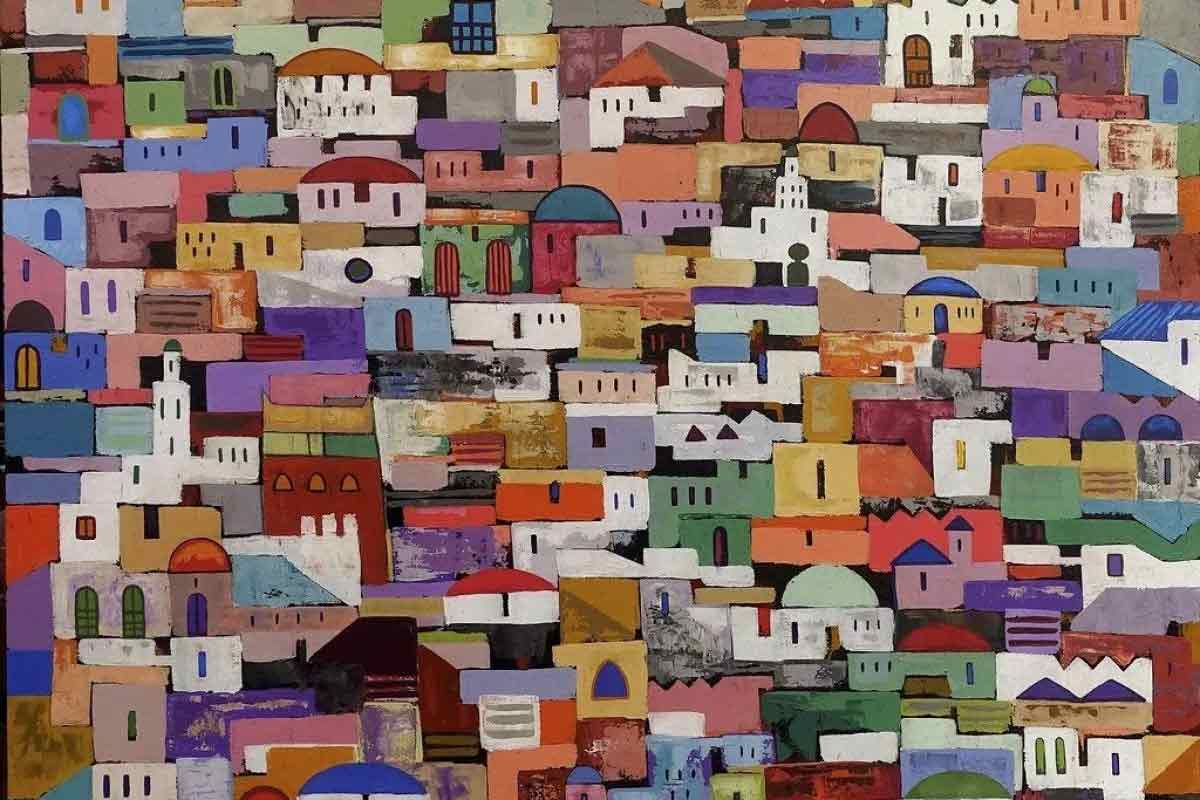
Art in Essaouira, whether pictorial or musical, whether it works on form and transforms matter, is always charged with phantasmagoria.
The artists who populate the city and give it life find their inspiration in the depths of the soul, where the roots of time and space merge, where there are no formal limits to expression.
Souiri artists have in common the irresistible attraction of the supernatural which is found even more clearly in painting. The African, tribal influence is strong in the color as well as in the line. The materials used to express the waking dream are of an astonishing diversity and totally free from any Western formalism.
The music is no exception. The Gnaoua culture (explained in the next section), its mysticism, its ancestral rites shrouded in secrecy can be found in the haunting rhythms, veritable sung and orchestrated mantras.
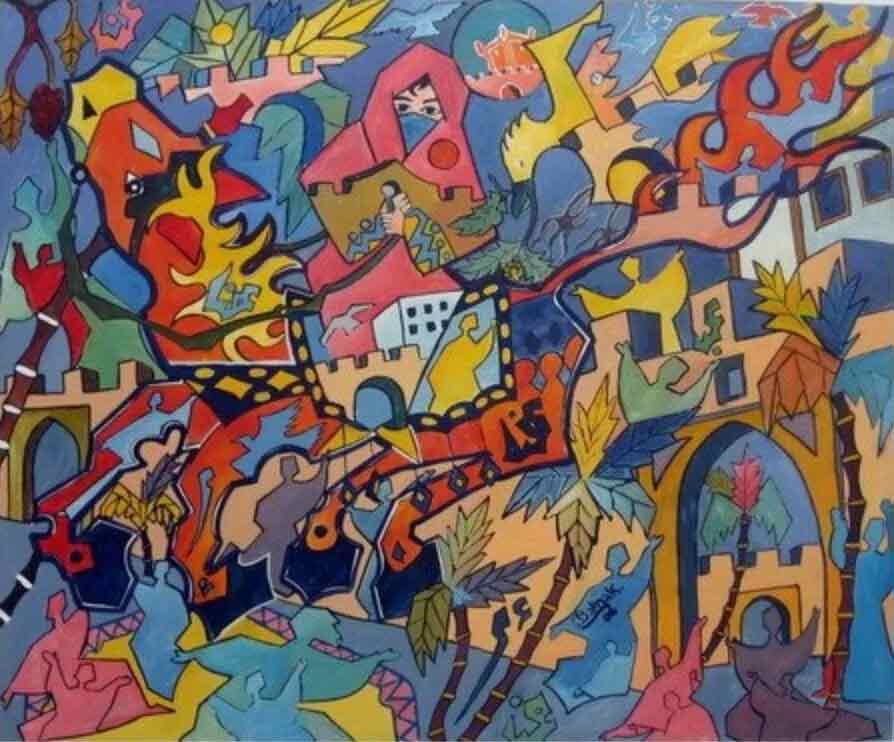
Essaouira’s art scenery popularity has been consolidated since Danish art historian and critic Frederic Damgaard, a lover of Islamic art, took a close interest in the works of local the painters and sculptors, and encouraged them to continue their artistic endeavors as he launched one of the city’s first art galleries in 1988 to bring international attention to the local artists.
These artists are mostly self-taught, with the notable exception of one of its pioneers, Boujemâa Lakhdar, curator at the Essaouira Popular Arts Museum from 1980 to 1989.
The work of these artists is often populated by hybrid creatures and elements borrowed from nature, and reflects a gestural spontaneity, often using various recycled objects from nearby markets.
With its shops and art galleries dotted around the medina, many local artists display their works along the sidewalks, making Essaouira look like an open-air museum.
Apart from the Naive art (characterized by broad brushstrokes, rich bright colors and steeped in African mythology and figures), Calligraphy is another popular artistic style in Essaouira, showcasing Arabic and Berber scripts.
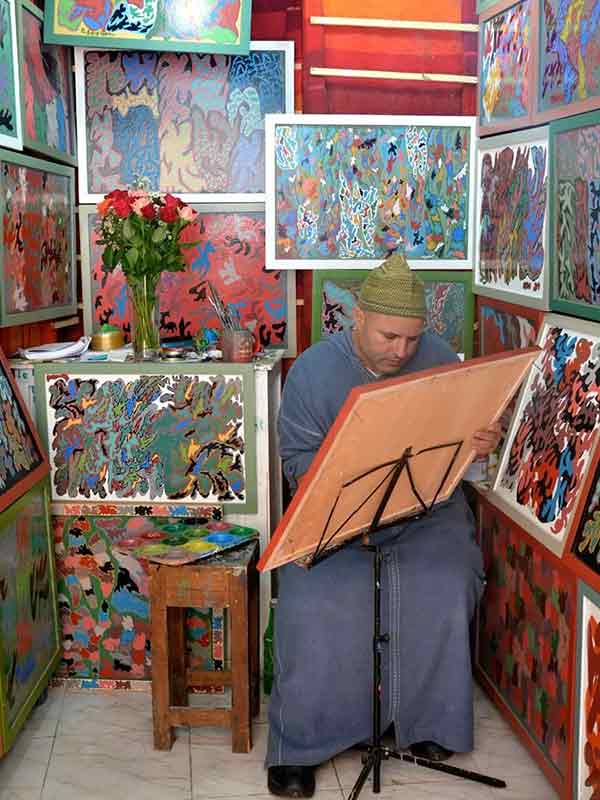
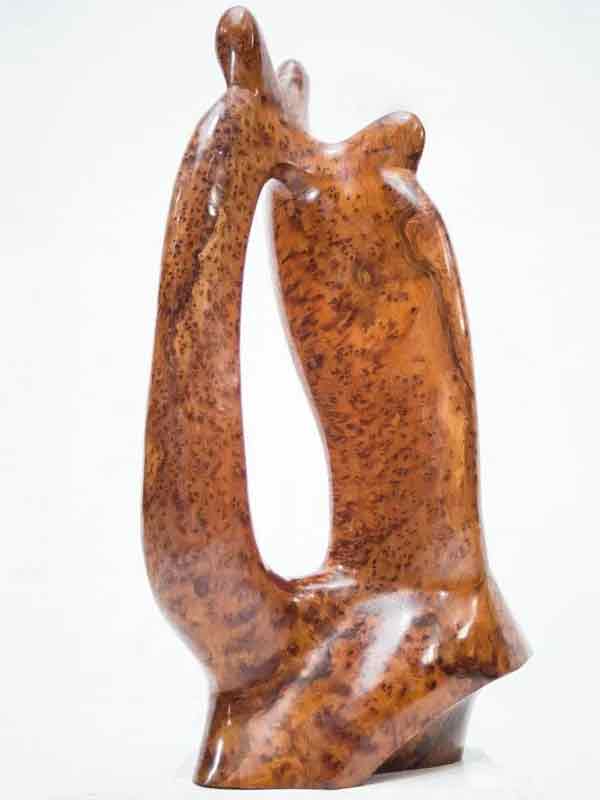

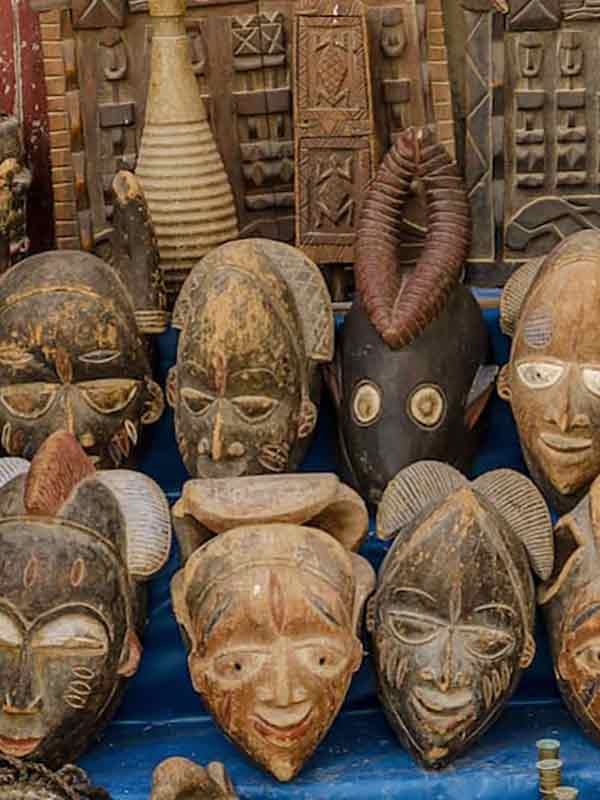
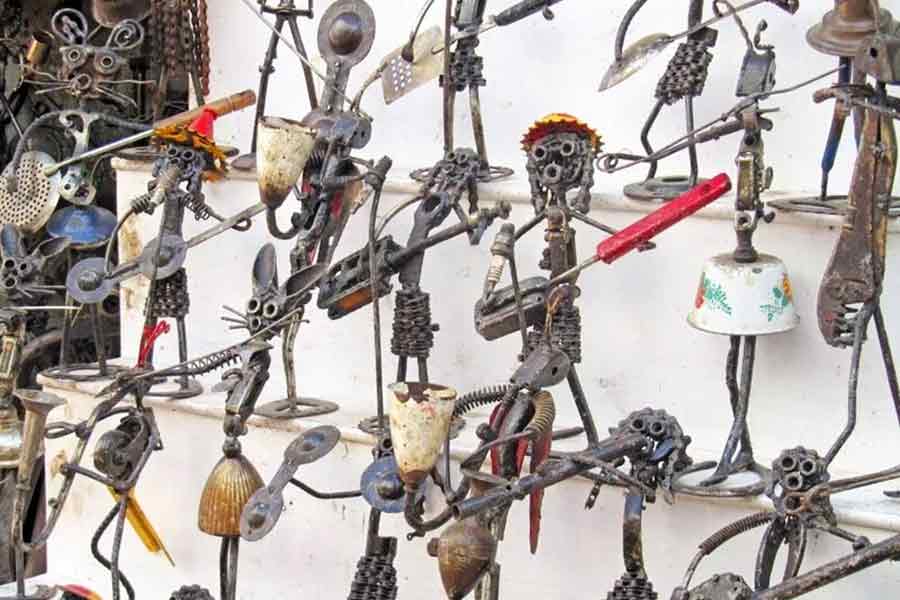
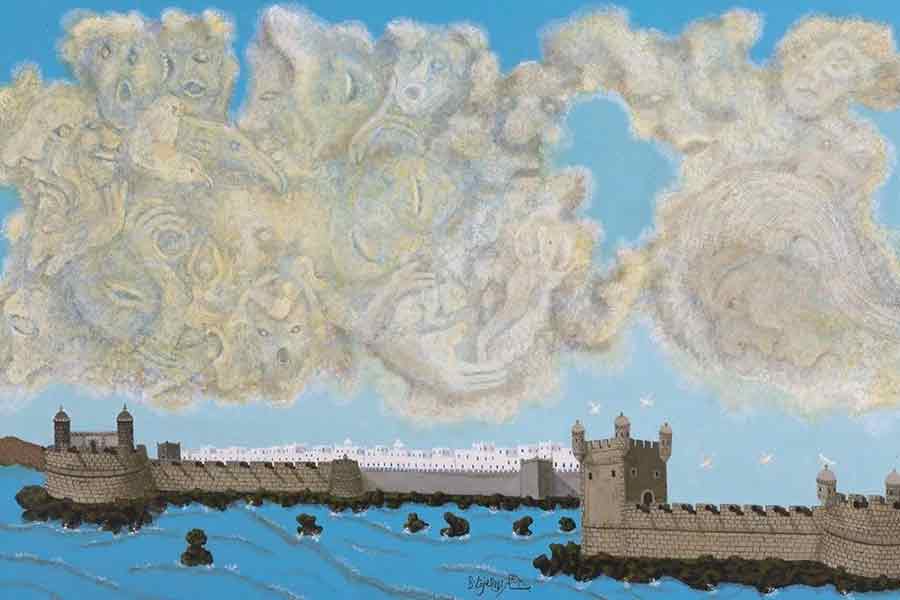
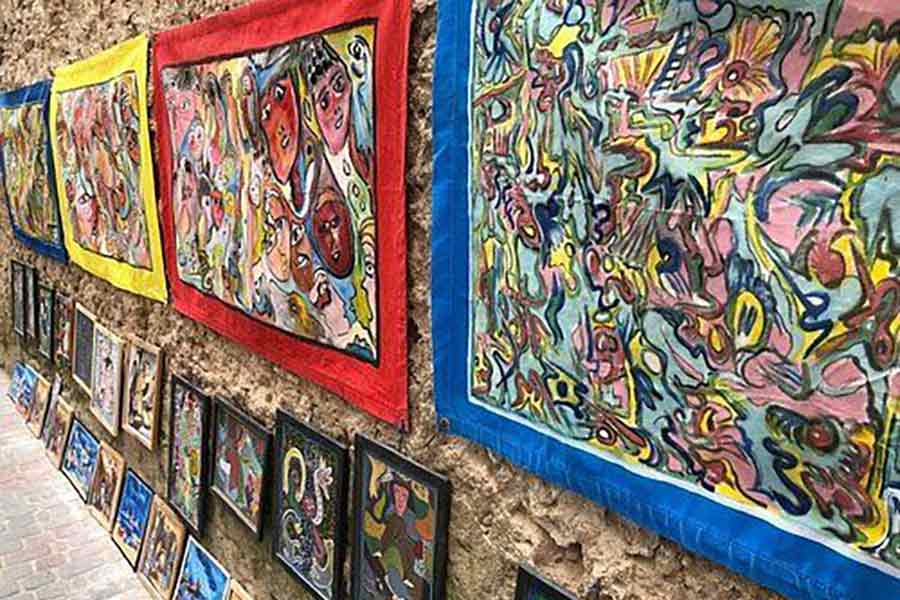
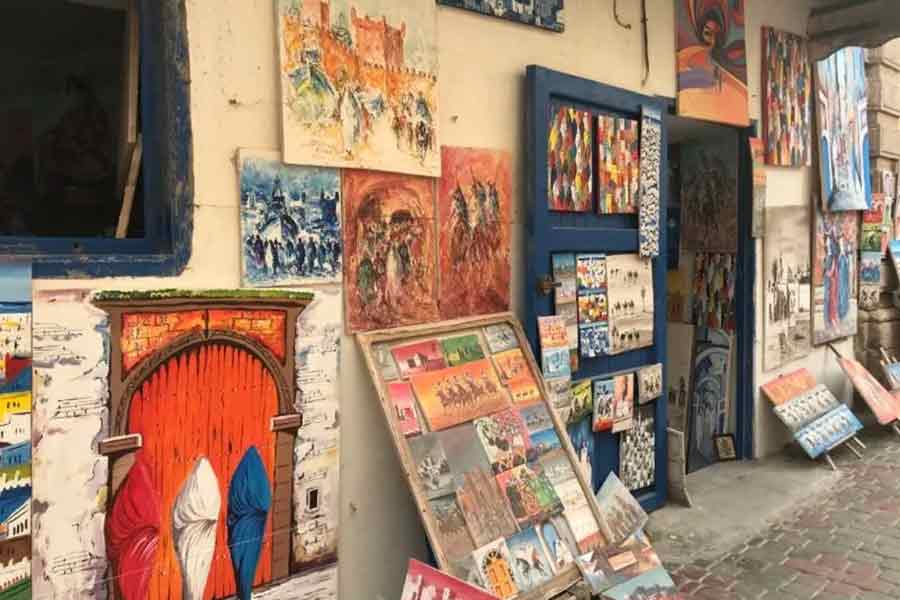
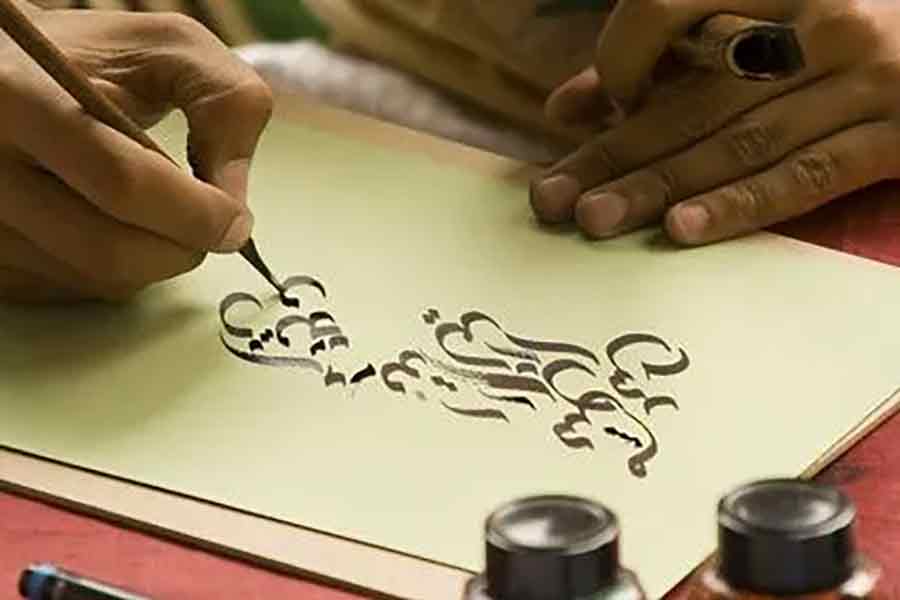
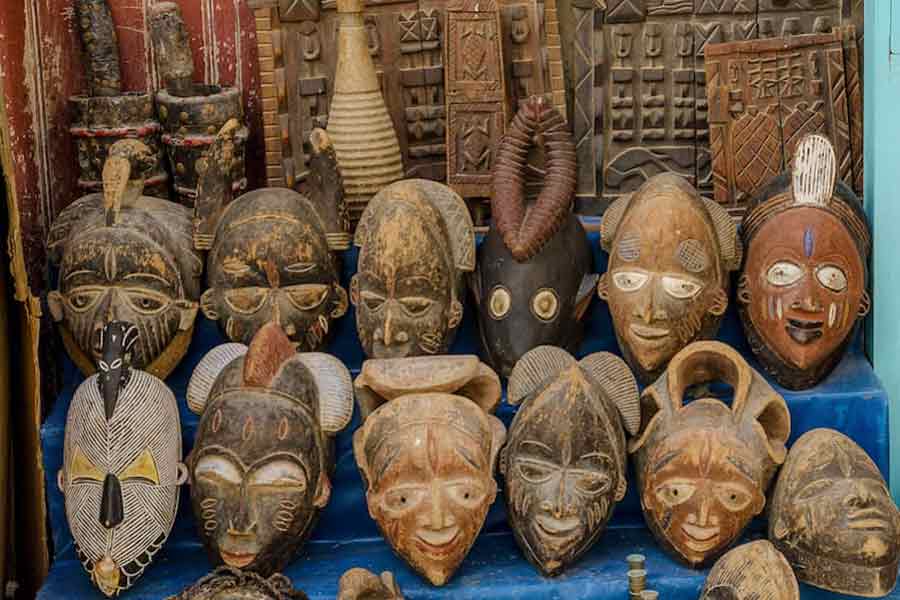
Today, more than fifty permanent galleries and hundreds of exhibitions each year enrich the natural heritage of the city of Essaouira. Here are a few of Essaouira’s art galleries to visit while on vacation:
Opened in 1993, the Espace Othello exhibits the works of up-and-coming artists. It is also one of the most important and varied galleries in Essaouira, which presents pieces with styles and artistic interpretations all the most different from each other. If you are looking for a unique work of art that reflects Essaouira’s artistic heritage, Espace Othello is a must visit.
Frédéric Damgaard is a bright and colorful gallery that exhibits the works of local painters and sculptors from Essaouira. In addition to being able to admire these magnificent masterpieces, it is also possible to buy them on site. The gallery itself is worth a visit, as its decoration is inspired by the souks and cafes of Essaouira.
Former Italian consulate, the Real Mogador is an art center and an artists’ residence which offers several exhibitions of Moroccan, European and Latin American painters and sculptors. Located in one of the most beautiful riads in the medina, the place alone deserves to be visited. Gnaoua, theatre, dance and poetry shows are also organized there.
The Kasbah Gallery is housed in a magnificent 18th century riad which exhibits surprising old and unusual objects as well as paintings of different styles: naive, calligraphy, realism, abstraction, symbolism, expressionism and surrealism. Made up of 11 rooms, it gives particular prominence to the naive-style of Souiri artists and exhibits magnificent furniture, sculptures, pottery, bronzes and carpets that tell the rich history of Essaouira.
The Artisanal Center of Essaouira is an open-air art gallery where you can see artisans at work and learn about their traditional skills, tools, materials, and production processes for their works.
Permanence of the Past in the Present…
Gnawa originate from West Africa (Guinea, Sudan, Mali) and they were brought to Morocco as slaves, then intermixed with the local population.
They formed a brotherhood to create an original cult mixing African and Berber contributions. In Morocco, the Gnawa are therefore a cultures’ patchwork of black Africa, the Berber and the Arab-Muslim traditions.
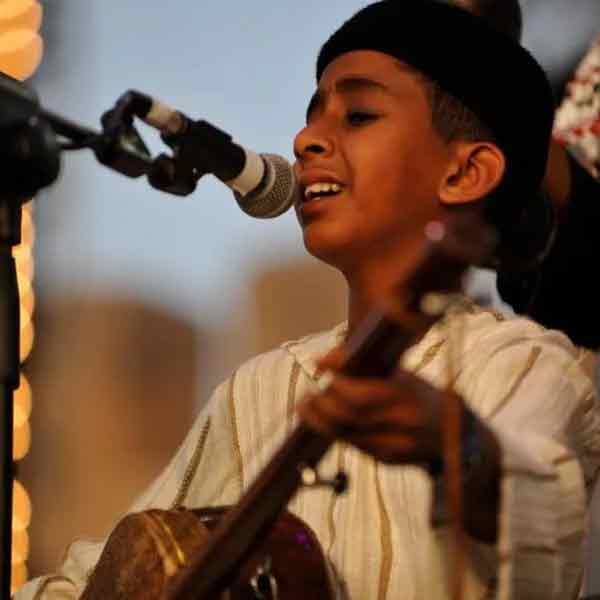
Very present in Essaouira, the G’naoua use songs, dances and rituals to reach a state of trance.
The main musical instrument among the Gnawa is the Guembri (also called hajhouj), and is usually played by the master musician (the Maâlem). The guembri is an old 3-string lute drum instrument made with goat gut, a rather rectangular sound box covered with camel or dromedary skin and crossed by a handle, and it’s heir to an even older instrument, originating in West Africa, the n’goni.
The Gnaoua ceremonies, called lila (night, in Arabic) usually have a therapeutic character, referring to animism calls for the intercession of spirits, which come to inhabit the bodies of patients during their trance. Under its profane aspect however, the music of the G’nawa attracts people from all over the world.
With its universal tempo, Gnaoua music has inspired not only musician groups from the Magreb, but is also an object of fascination for foreign worldwide renowned musicians as well.
Some of the key and legendary figures in the art of Tagnaouite in Essaouira are mâalem Mahmoud Guniea, mâalem Hassan Boussou and mâalem Mustapha Baqbou.
Like every year in June, the “wind city” vibrates to the rhythm of fusions between traditional Gnaoua music and sounds from elsewhere. This is the spirit of the festival that brings the old Mogador out of its traditional tranquility.
The event was created in 1998 to celebrate the music of the descendants of slaves taken to the Maghreb during the Arab slave trade in sub-Saharan Africa between the 8th and 19th centuries. A music that is both melancholy and dancing carried by the lyrical flights of the mâalems, great masters of the genre and virtuosos of the guembri.
Long marginalized, these rhythms with alleged therapeutic virtues have been rehabilitated so well that the G’naoua festival has become a popular international event. Hundreds of thousands of spectators flock there for a fine line-up of world-renowned artists like the Mexican Carlos Santana, world-famous prolific guitarist, or even the bassist Marcus Miller.
The attraction exerted by the G’nawa music on Western musicians is nothing new since already in the 60s, Jimi Hendrix was dragging his Fender near Essaouira and, before Robert Plant and Jimmy Page, the jazzman Randy Weston and many others had gone to draw their inspiration from this Moroccan trance music.
Throughout the festival, the sound of the guembri will mix with flamenco, reggae, salsa, rumba or even Tuareg or Tamil rhythms, from the largest stages on the beach or on Place Moulay-Hassan, the main crossroads in the heart of the medina, to much more intimate sessions in the zaouias, where esoteric rituals are practiced.
The Gnawa of Morocco have been experiencing an upheaval in their poetic-musical practices for more than ten years. Following their registration under the “music of the world” label and is pending the decision of Unesco to include the G’nawa tradition in the intangible heritage of humanity.
All in all, G’naoua offers a slew of traditional and local artists that makes Essaouira vibrate to the sound of funk, blues, jazz and soul from Africa and elsewhere: 3 days of travel through music, art and culture. You will undoubtedly be seduced by this African Woodstock which will introduce you to Moroccan hospitality and generosity.
For Motorsport Fans…
Under the “citizen and responsible” slogan, the concept is simple and yet innovative: the Rallye Aïcha des Gazelles is a 100% all-female off-road raid held annually, without GPS, at the wheel of all-terrain vehicles.
Since 1990, the Rallye Aïcha des Gazelles has brought together several hundred women of different ages and nationalities, to take on the Moroccan desert.
The event is more than just a sporting competition as, among other things, the organization responsible for the rally actively supports the charity Cœur de Gazelles, which works with the local authorities to help the poor communities located around the route.
The competition is primarily focused on orientation and adventure: The Gazelles must cover the route by accumulating the lowest mileage and validating the greatest number of beacons possible, however the speed and time recorded on the stopwatch are not a factor in the classification of the winning team.

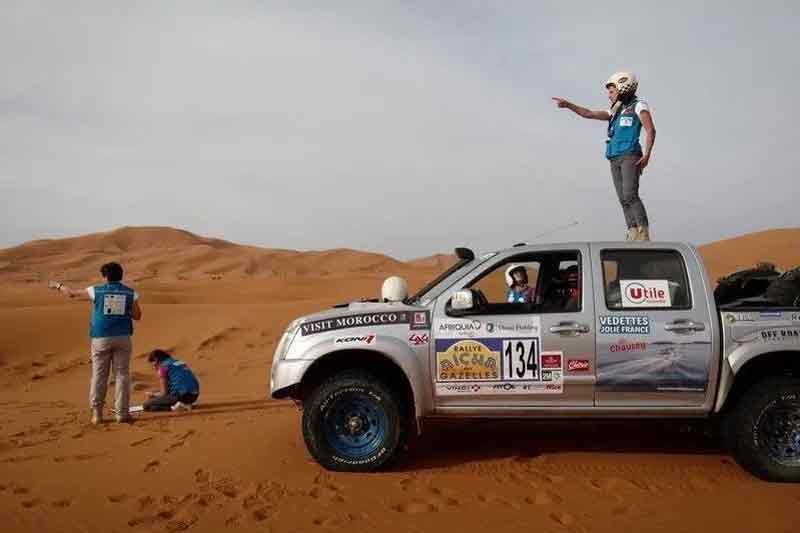
The participating crews from different countries embark on a trip in the mythical African desert, and the race usually takes off in Essaouira.
The competitors must cross the desert the old-fashioned way: with compasses and maps as their only tools of navigation. Penalties are imposed for non-validated passage controls and calls for mechanical assistance.
During the journey of the of competition, women from all over the world will meet in pairs to travel the desert and live a unique adventure under the sign of self-transcendence, courage and solidarity.
The Rallye Aïcha des Gazelles du Maroc is the only 100% female off-road Rally-Raid in the world to be ISO 14001:2015 certified.
The city of Essaouira is known for its old walls, restaurants and bars, and lively beaches. However, if you head to the outskirts, outside of the buzzing city life, you’ll be surprised at how many interesting experiences you can indulge in.
The following are some spots that are a must-visit while you’re in Essaouira.
The name Sidi Kaouki was of a veterinarian who saved goats during a plague epidemic that hit the area a very long time ago. Today, Sidi Kaouki has become a seaside resort for the locals, as well as for the tourists who appreciate this pearl of the Moroccan coast. It became known for its splendid beach which offers an exceptional view of the ocean, and which allows thanks to its size, the practice of many leisure activities such as surfing, kite surfing and wind surfing.
Many experienced kite surfers go there every year because of the quality of the waves.
Surfers enjoy the excellent ‘spots’ which are as famous for the danger as they are for their strong waves. The site is rather reserved for professionals.
It is also the dream place to take beautiful walks along the beach on foot, by bike, on the back of a camel, a horse or on a quad bike. Surrounded by forests of Argan trees (the fruits are used to make Argan oil), the Berber village was re-discovered by the hippies in the 70s, then in the 90s, where the first hotels were built. Sidi Kaouki is divided into two parts: The north of the village gives access to the fishing village of Cap Sim and the south is surrounded by sand dunes. In the center of the village is the marabout of Sidi Kaouki, which has a yearly pilgrimage ritual called moussem.
At the water’s edge, this magnificent beach is the ideal sport for windsurfing: the waves are high, strong and plenty.
Moulay Bouzerktoun is a small fishing village facing the Atlantic and located around 25 kilometers north of Essaouira, on the road to Safi city. It is a place that is still a bit wild because it is not frequented by many tourists. It is also and above all one of the main destinations for windsurfing and kitesurfing.
The site has a magnificent beach between dunes and cliffs. The strong trade wind from the northeast (the cherki in Arabic) blows almost all year round and the place requires a certain level of mastery for windsurfing and kitesurfing.
In recent years, it has become a world competition spot for kitesurfing and windsurfing. This is where the first edition of the Windsurf Trilogy took place in 1997 where several world champions competed.
On site there is a very nice place to stop to eat and have a drink, it is the restaurant Dar Lawama. The welcome is super friendly, and the shaded terrace overlooking the ocean is just perfect. A superb little-known place to relax, have a drink, eat, and watch the ballet of the boards in the waves.
In search of tranquility? The beach of Tafedna will charm you for sure!
On the Atlantic coast, the village of Tafedna is about 60 kilometers south of Essaouira.
This small village is renowned for its tranquility and the beauty of its landscapes. Its bay, which extends over 4 km, offers a fine sandy beach in the hollow of the Argan cliffs.
A unique spot far from the overcrowded beaches of the region as it’s spared from mass tourism. All along this beach are houses and some small typical shops (Hanouts).
In the creek dominated by the cliffs, fishing boats abandoned on the sand spread their bright colors.
Very fine sand dunes as far as the eye can see cradled under the sound of the Atlantic waves, guaranteeing a total immersion in nature.
It is located 70 km north of Agadir and 100 km south of Essaouira, on the road that connects the two cities.
It bears the name of the point which is nearby and is a rural town between the sea and the arid mountains. Its main activity is fishing as it has a small port, and its gastronomy is based on fish that is caught daily from traditional boats.
The village is known for its favorable wind conditions and waves suitable for surfing (Winter is the best season, thanks to its northeast winds and swell), but it’s also an ideal place for fishing and scuba diving.
The bay north of the village is made up of sandy beaches; to the south, on the other hand, there are many cliffs and reefs. These last beaches benefit from different orientations and various types of waves. Those of the reefs are hollow while those of the bay are of great longitude.
Its biodiversity, its mild climate all year round and the exceptional beauty of its environment make this place an ecological marvel.
Searching for an authentic, even rustic experience? Then you have to go to the Had Draa Souk. It is about thirty kilometers northeast of Essaouira. Direction Marrakech, in the village of Ounagha turn left, and continue to the village of Had Draa. Then just follow the crowd. It is a market that takes place every Sunday, and it is a real traditional Berber souk.
This is not a souk to sell trinkets to tourists. No, it’s the locals who come from all the surrounding towns and villages, very early, to sell and buy food, everyday items as well as cattle and poultry.
It is absolutely necessary to make a detour by the cattle market. This is the furthest point from the souk. The sales of dromedaries, sheep and cows start quite early and it’s very lively. While strolling through the market you will necessarily pass near the butcher’s area and you will have to have a strong stomach with the freshly cut animal heads and pools of blood everywhere.
A little more fun is also an area reserved for barbers, and their technique is quite rudimentary.
On leaving the market you can buy a few pieces of meat to grill in one of the many café terraces, while sipping your mint tea.
For millennia, the Sidi M’Bareck waterfalls have gently let the history of the region flow between dunes and rocks coming from a source located 3 km upstream.
At kilometer 12 from Sidi Kaouki, not far from the village of Aït Idir, you can see a green valley, nestled in a canyon leading to the sea: a wild beach sheltered from the wind.
To reach the waterfalls, you have to venture on one of the mule tracks descending towards the green valley with the air of a small oasis
Sidi M’Bareck, by its natural richness, was for a long time a stopover for camel caravans, loaded with products bound for Europe, and which went up from Timbuktu towards the port of Essaouira.
The nomads stayed around the waterfall, where fresh water, greenery, vegetable crops, the sea and food in abundance, formed an idyllic cocktail.
A white marabout is also located overlooking the site, still welcoming visitors today.
The site can be visited by Quad, on foot, by Camel or by 4×4, and from time to time bivouacs are organized in the middle of a welcoming nature, in order to share these traditions with tourists eager to discover them.